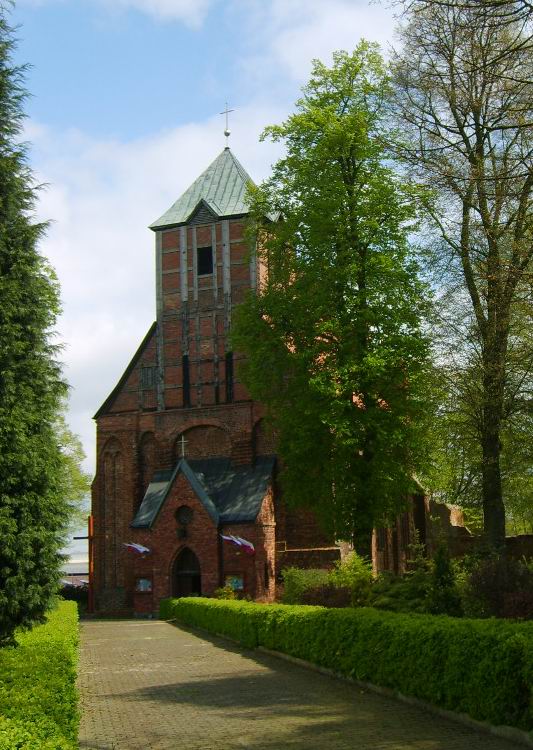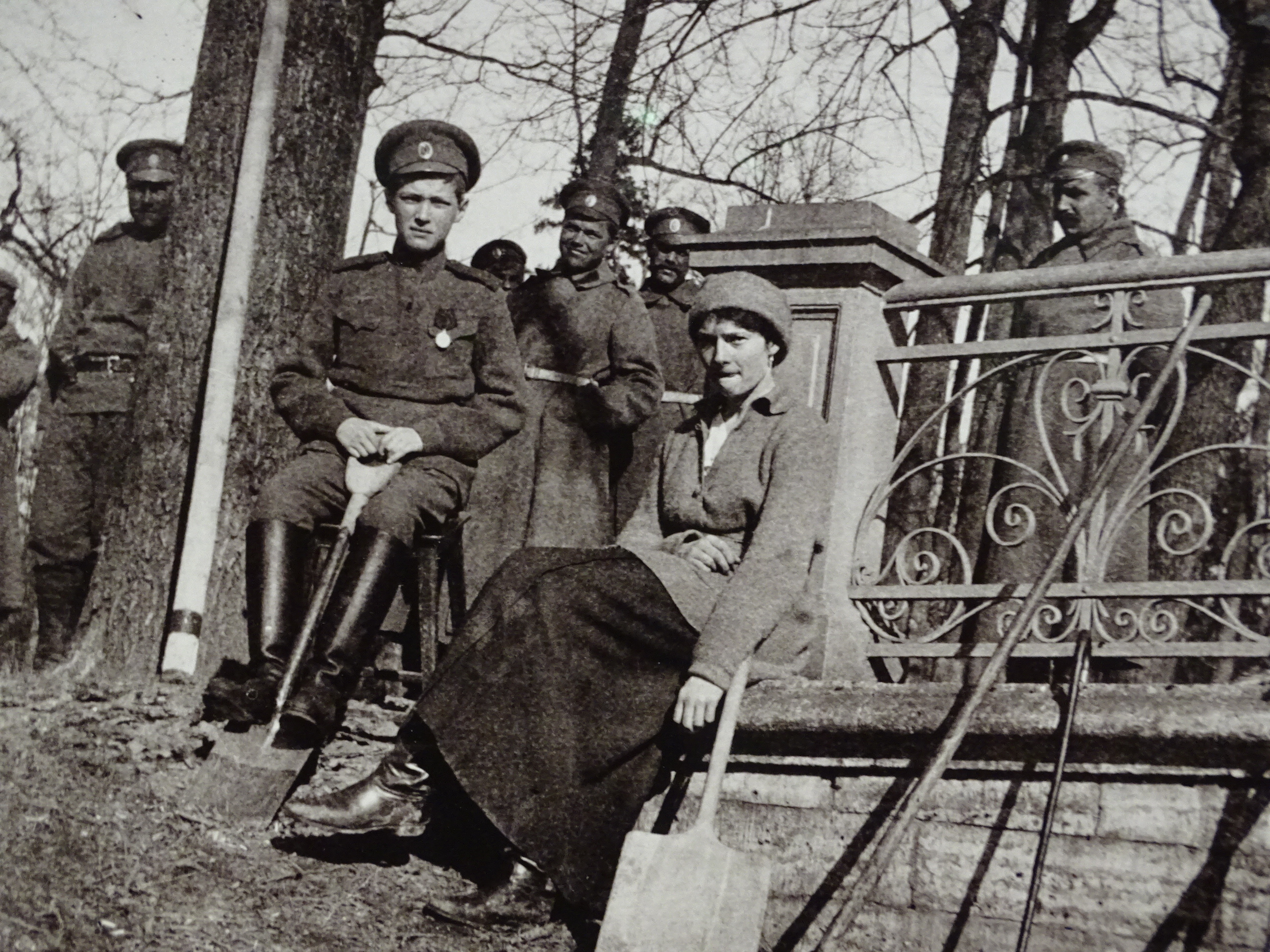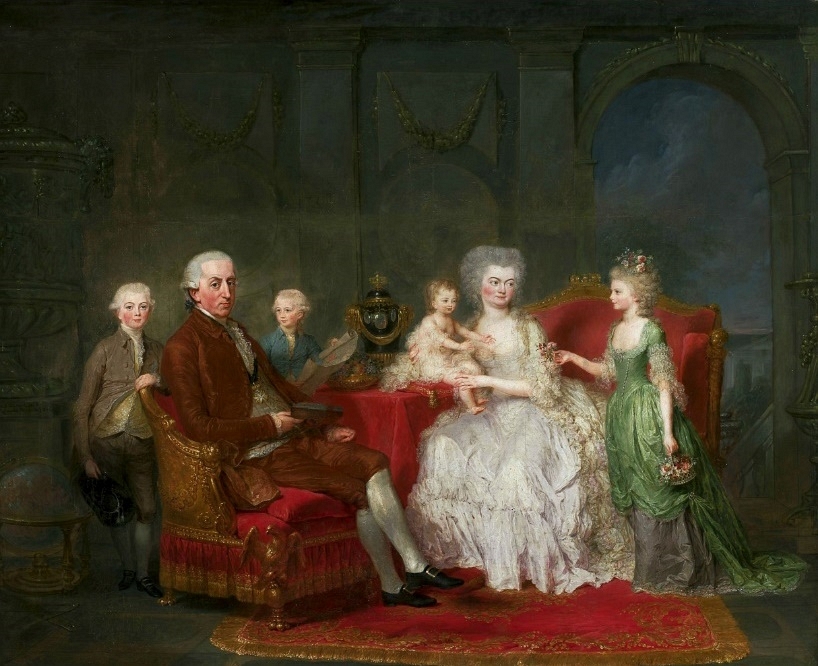|
Elisabeth Christine Of Brunswick-Wolfenbüttel, Crown Princess Of Prussia
Elisabeth Christine Ulrike of Brunswick-Wolfenbüttel (8 November 1746 – 18 February 1840), was Crown Princess of Prussia as the first wife of Crown Prince Frederick William, her cousin and the future king Frederick William II of Prussia. Background and family Elizabeth Christine was the seventh child and third daughter of Charles I, Duke of Brunswick-Lüneburg and Princess Philippine Charlotte of Prussia. Her father was brother to Elisabeth Christine of Brunswick-Wolfenbüttel-Bevern, the Queen of Prussia and Juliana Maria of Brunswick-Wolfenbüttel, the Queen of Denmark, while her mother was a sister of Frederick the Great. The luckless Ivan VI of Russia, who spent almost his entire life in captivity, was a first cousin. Elizabeth Christine held the rank of Duchess in Brunswick with the style of ''Serene Highness'' and the title of Princess ("Her Serene Highness Princess Elisabeth Christine"). Marriage King Frederick the Great was childless, and his heir presumptive was ... [...More Info...] [...Related Items...] OR: [Wikipedia] [Google] [Baidu] |
Wolfenbüttel
Wolfenbüttel (; nds, Wulfenbüddel) is a town in Lower Saxony, Germany, the administrative capital of Wolfenbüttel District. It is best known as the location of the internationally renowned Herzog August Library and for having the largest concentration of timber-framed buildings in Germany. It is an episcopal see of the Evangelical Lutheran Church in Brunswick. It is also home to the Jägermeister distillery, houses a campus of the Ostfalia University of Applied Sciences, and the Landesmusikakademie of Lower Saxony. Geography The town center is located at an elevation of on the Oker river near the confluence with its Altenau tributary, about south of Brunswick and southeast of the state capital Hannover. Wolfenbüttel is situated about half-way between the Harz mountain range in the south and the Lüneburg Heath in the north. The Elm-Lappwald Nature Park and the Asse hill range stretch east and southeast of the town. With a population of about 52,000 people, Wolfe ... [...More Info...] [...Related Items...] OR: [Wikipedia] [Google] [Baidu] |
Thaler
A thaler (; also taler, from german: Taler) is one of the large silver coins minted in the states and territories of the Holy Roman Empire and the Habsburg monarchy during the Early Modern period. A ''thaler'' size silver coin has a diameter of about and a weight of about 25 to 30 grams (roughly 1 ounce). The word is shortened from ''Joachimsthaler'', the original ''thaler'' coin minted in Joachimstal, Bohemia, from 1520. While the first standard coin of the Holy Roman Empire was the ''Guldengroschen'' of 1524, its longest-lived coin was the ''Reichsthaler (Reichstaler)'', which contained Cologne Mark of fine silver (or 25.984 g), and which was issued in various versions from 1566 to 1875. From the 17th century a lesser-valued ''North German thaler'' currency unit emerged, which by the 19th century became par with the ''Vereinsthaler''. The ''thaler'' silver coin type continued to be minted until the 20th century in the form of the Mexican peso until 1914, the five S ... [...More Info...] [...Related Items...] OR: [Wikipedia] [Google] [Baidu] |
Allgemeine Deutsche Biographie
''Allgemeine Deutsche Biographie'' (ADB, german: Universal German Biography) is one of the most important and comprehensive biographical reference works in the German language. It was published by the Historical Commission of the Bavarian Academy of Sciences between 1875 and 1912 in 56 volumes, printed in Leipzig by Duncker & Humblot. The ADB contains biographies of about 26,500 people who died before 1900 and lived in the German language Sprachraum of their time, including people from the Netherlands before 1648. Its successor, the '' Neue Deutsche Biographie'', was started in 1953 and is planned to be finished in 2023. The index and full-text articles of ADB and NDB are freely available online via the website ''German Biography'' (''Deutsche Biographie''). Notes References * * External links * ''Allgemeine Deutsche Biographie'' - full-text articles at German Wikisource Wikisource is an online digital library of free-content textual sources on a wiki, operated b ... [...More Info...] [...Related Items...] OR: [Wikipedia] [Google] [Baidu] |
Mausoleum
A mausoleum is an external free-standing building constructed as a monument enclosing the interment space or burial chamber of a deceased person or people. A mausoleum without the person's remains is called a cenotaph. A mausoleum may be considered a type of tomb, or the tomb may be considered to be within the mausoleum. Overview The word ''mausoleum'' (from Greek μαυσωλείον) derives from the Mausoleum at Halicarnassus (near modern-day Bodrum in Turkey), the grave of King Mausolus, the Persian satrap of Caria, whose large tomb was one of the Seven Wonders of the Ancient World. Historically, mausolea were, and still may be, large and impressive constructions for a deceased leader or other person of importance. However, smaller mausolea soon became popular with the gentry and nobility in many countries. In the Roman Empire, these were often in necropoles or along roadsides: the via Appia Antica retains the ruins of many private mausolea for kilometres outside Rome. Whe ... [...More Info...] [...Related Items...] OR: [Wikipedia] [Google] [Baidu] |
Frederick William IV
Frederick William IV (german: Friedrich Wilhelm IV.; 15 October 17952 January 1861), the eldest son and successor of Frederick William III of Prussia, reigned as King of Prussia from 7 June 1840 to his death on 2 January 1861. Also referred to as the "romanticist on the throne", he is best remembered for the many buildings he had constructed in Berlin and Potsdam as well as for the completion of the Gothic Cologne Cathedral. In politics, he was a conservative, who initially pursued a moderate policy of easing press censorship and reconciling with the Catholic population of the kingdom. During the German revolutions of 1848–1849, he at first accommodated the revolutionaries but rejected the title of Emperor of the Germans offered by the Frankfurt Parliament in 1849, believing that Parliament did not have the right to make such an offer. He used military force to crush the revolutionaries throughout the German Confederation. From 1849 onward he converted Prussia into a constit ... [...More Info...] [...Related Items...] OR: [Wikipedia] [Google] [Baidu] |
Jasienica, Police
Jasienica (german: Jasenitz) is a district of Police, Poland, a town in the Pomerania Region. In the High and Late Middle Ages, the village was the site of Jasenitz Abbey, now in ruins. Gunica River and a kayak-way In Jasienica there is a confluence of the Gunica - a small river used as a kayak-way from Węgornik through Tanowo, Tatynia and Wieńkowo. Gunica flows into Oder in the north part of the town of Police. Jasienica Abbey An Augustinian abbey existed from the 14th century until its dissolution during the Protestant Reformation, when the abbeys of the Duchy of Pomerania were turned into secular domains of the local dukes. The buildings are now in ruins. Each year at the end of August there is ''Augustinian Fair'' (Polish: ''Jarmark Augustiański'') organized in the area of ruins of the abbey, with parade residents of the estate in historical costumes, lectures, artistic performances and stalls with traditional products. Notable residents * Hans Modrow (born 1928), po ... [...More Info...] [...Related Items...] OR: [Wikipedia] [Google] [Baidu] |
Cloister
A cloister (from Latin ''claustrum'', "enclosure") is a covered walk, open gallery, or open arcade running along the walls of buildings and forming a quadrangle or garth. The attachment of a cloister to a cathedral or church, commonly against a warm southern flank, usually indicates that it is (or once was) part of a monastic foundation, "forming a continuous and solid architectural barrier... that effectively separates the world of the monks from that of the serfs and workmen, whose lives and works went forward outside and around the cloister." Cloistered (or ''claustral'') life is also another name for the monastic life of a monk or nun. The English term ''enclosure'' is used in contemporary Catholic church law translations to mean cloistered, and some form of the Latin parent word "claustrum" is frequently used as a metonymic name for ''monastery'' in languages such as German. History of the cloister Historically, the early medieval cloister had several antecedents: the ... [...More Info...] [...Related Items...] OR: [Wikipedia] [Google] [Baidu] |
Augustus William, Duke Of Brunswick-Bevern
Caesar Augustus (born Gaius Octavius; 23 September 63 BC – 19 August AD 14), also known as Octavian, was the first Roman emperor; he reigned from 27 BC until his death in AD 14. He is known for being the founder of the Roman Principate, which is the first phase of the Roman Empire, and Augustus is considered one of the greatest leaders in human history. The reign of Augustus initiated an imperial cult as well as an era associated with imperial peace, the ''Pax Romana'' or ''Pax Augusta''. The Roman world was largely free from large-scale conflict for more than two centuries despite continuous wars of imperial expansion on the empire's frontiers and the year-long civil war known as the "Year of the Four Emperors" over the imperial succession. Originally named Gaius Octavius, he was born into an old and wealthy equestrian branch of the plebeian ''gens'' Octavia. His maternal great-uncle Julius Caesar was assassinated in 44 BC, and Octavius was named in Caesar's ... [...More Info...] [...Related Items...] OR: [Wikipedia] [Google] [Baidu] |
Ducal Castle, Szczecin
The Ducal Castle, also known as the Pomeranian Dukes' Castle, and Szczecin Castle, is a renaissance castle in the city of Szczecin, Poland, located at the Castle Hill in the Stare Miasto (''Old Town'') neighbourhood, near the Oder river. It is built in the gothic and Pomeranian mannerism architectural style. The castle was the seat of the dukes of Pomerania-Stettin of the House of Pomerania, who ruled the Duchy of Pomerania from 1121 to 1637. The building history originates in 1346, when duke Barnim III began the construction of the ducal housing complex, and continues to 1428, when, under the rule of Casimir V, it was expanded, forming the castle. Currently, it is one of the largest cultural centres in the West Pomeranian Voivodeship, Poland. History Barnim the Great of Pomerania-Stettin erected the castle within Szczecin's walls against the will of the burghers in 1346. An older Pomeranian burgh had been leveled in 1249.Werner Buchholz, ''Pommern'', Siedler, 1999, p.121, ... [...More Info...] [...Related Items...] OR: [Wikipedia] [Google] [Baidu] |
House Arrest
In justice and law, house arrest (also called home confinement, home detention, or, in modern times, electronic monitoring) is a measure by which a person is confined by the authorities to their residence. Travel is usually restricted, if allowed at all. House arrest is an alternative to being in a prison while awaiting trial or after sentencing. While house arrest can be applied to criminal cases when prison does not seem an appropriate measure, the term is often applied to the use of house confinement as a measure of repression by authoritarian governments against political dissidents. In these cases, the person under house arrest often does not have access to any means of communication with people outside of the home; if electronic communication is allowed, conversations may be monitored. History Judges have imposed sentences of home confinement, as an alternative to prison, as far back as the 17th century. Galileo was confined to his home following his infamous trial ... [...More Info...] [...Related Items...] OR: [Wikipedia] [Google] [Baidu] |
Frederica Louisa Of Hesse-Darmstadt
Frederica Louisa of Hesse-Darmstadt (german: Friederike Luise; 16 October 1751 – 25 February 1805) was Queen of Prussia as the second spouse of King Frederick William II. Life Frederica Louisa was the daughter of Louis IX, Landgrave of Hesse-Darmstadt, and Countess Palatine Caroline of Zweibrücken. She was born in Prenzlau. She was the sister of Grand Duchess Louise of Saxe-Weimar-Eisenach, as well as Grand Duke Louis I of Hesse. Marriage Frederica Louisa was selected to marry Frederick William immediately after his divorce from Elisabeth Christine of Brunswick-Lüneburg, after Margravine Philippine of Brandenburg-Schwedt and Sophia Albertina of Sweden had been suggested. Her mother was highly admired by Frederick the Great. The wedding was performed on 14 July 1769 at the Charlottenburg Palace. Frederica Louisa was described as solid and sensible and with an agreeable conversation, though lacking of beauty and any particular intellectual abilities.Atkinson, Emma Wi ... [...More Info...] [...Related Items...] OR: [Wikipedia] [Google] [Baidu] |

.jpeg/1200px-Taj_Mahal_(Edited).jpeg)
.jpg)




